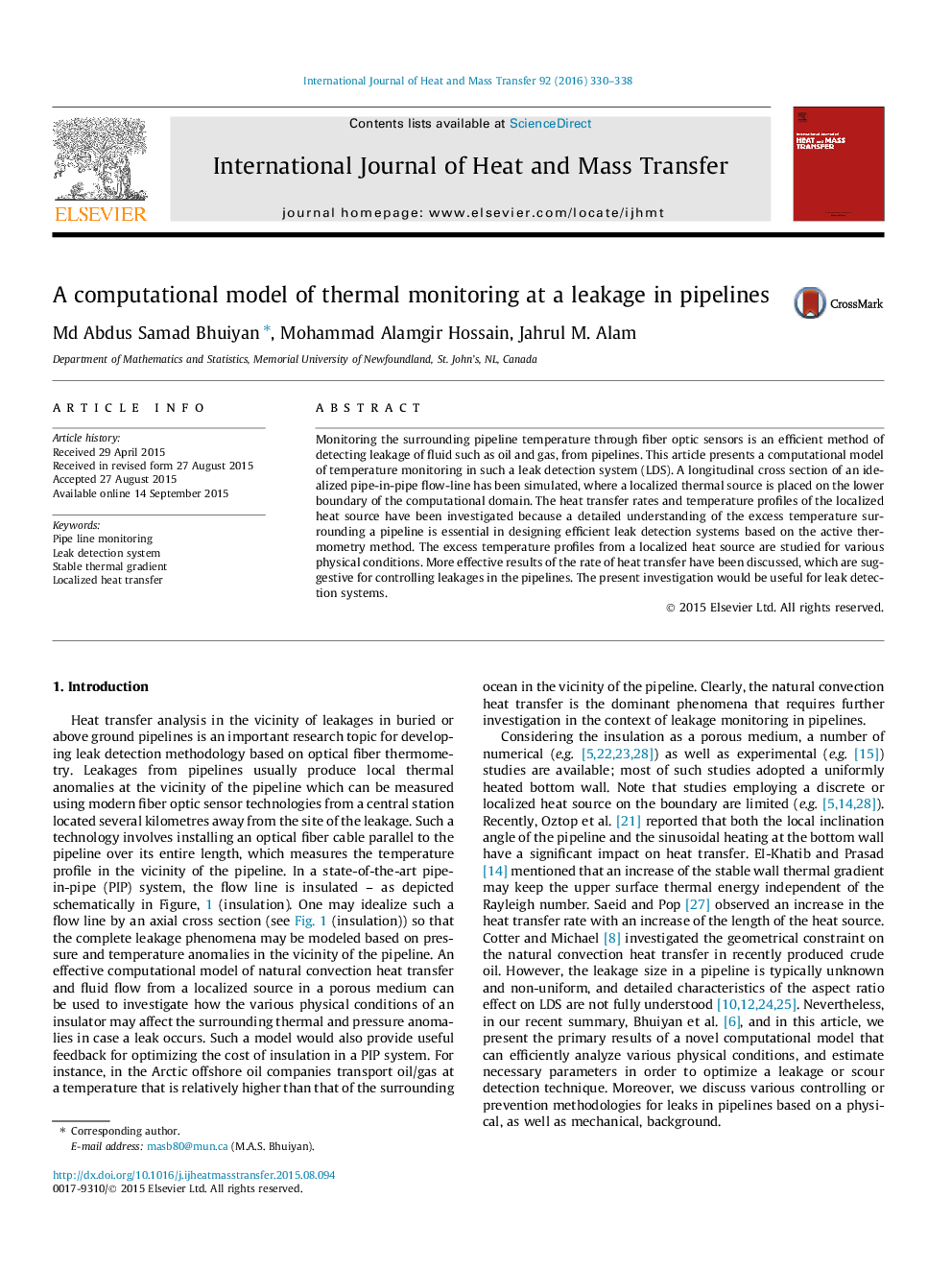| Article ID | Journal | Published Year | Pages | File Type |
|---|---|---|---|---|
| 656540 | International Journal of Heat and Mass Transfer | 2016 | 9 Pages |
•This article presents a computational model of temperature monitoring at a leakage in a pipeline.•Find the excess temperature profiles for localized heat source at the leaks in monitoring pipeline.•Some effective results of the rate of heat transfer have been discussed.
Monitoring the surrounding pipeline temperature through fiber optic sensors is an efficient method of detecting leakage of fluid such as oil and gas, from pipelines. This article presents a computational model of temperature monitoring in such a leak detection system (LDS). A longitudinal cross section of an idealized pipe-in-pipe flow-line has been simulated, where a localized thermal source is placed on the lower boundary of the computational domain. The heat transfer rates and temperature profiles of the localized heat source have been investigated because a detailed understanding of the excess temperature surrounding a pipeline is essential in designing efficient leak detection systems based on the active thermometry method. The excess temperature profiles from a localized heat source are studied for various physical conditions. More effective results of the rate of heat transfer have been discussed, which are suggestive for controlling leakages in the pipelines. The present investigation would be useful for leak detection systems.
